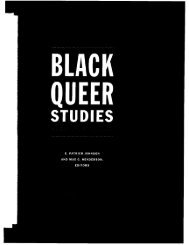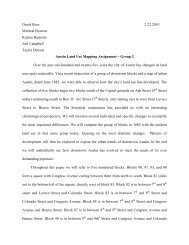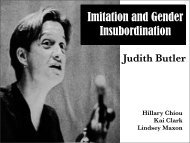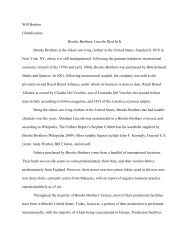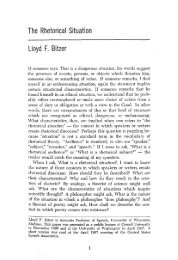Coherence, Cohesion, and Writing Quality Stephen P. Witte; Lester ...
Coherence, Cohesion, and Writing Quality Stephen P. Witte; Lester ...
Coherence, Cohesion, and Writing Quality Stephen P. Witte; Lester ...
You also want an ePaper? Increase the reach of your titles
YUMPU automatically turns print PDFs into web optimized ePapers that Google loves.
194 College Composition <strong>and</strong> Communicatzonresults more directly from the associations of the underlined items with campingtrip The underlined items in sentence (30)collocate with camping trip insentence (29). The mountaineering guidebook passage, however, is muchmore difficult to analyze. For one of the authors of the present article, antecedentknowledge of mountaineering allows Steamboat Prow to collocatewith Mt. Rainier <strong>and</strong> bergschrund to collocate with glacier. For the other author,neither pair is lexically related by collocation apart from the text wherethey are connected by inference. We will return to this problem later in thisessay.In addition to the taxonomy that allows cohesive ties to be classified accordingto function, Halliday <strong>and</strong> Hasan introduce a second taxonomy. Thissecond taxonomy allows cohesive ties to be classified according to theamount of text spanned by the presupposed <strong>and</strong> presapposing elements of agiven tie. Halliday <strong>and</strong> Hasan posit four such "text-span" classes. Membershipin a class is determined by the number of T-units a given cohesive tiespans.' Taken together, the two taxonomies Halliday <strong>and</strong> Hasan presentallow any given cohesive tie to be classified in two different ways, one accordingto function <strong>and</strong> one according to distance. The four "text-span"classes contained in Halliday <strong>and</strong> Hasan's second taxonomy are illustrated inthe following paragraph from a student paper:Test-Span Classes ilmmediate, Mediated, Remote, Mediated-Remote)(31) Respect is one reason people change their behavior.(32) For example, one does not speak with his boss as he would talk to afriend or co-worker.(33) One might use four-letter words in talking to a co-worker, butprobably not in talking to his boss.(34) In talking to teachers or doctors, people also use bigger words thannormal.(35) Although the situation is different than when one speaks with a bossor a doctor, one often talks with a minister or priest different [sic]than he talks with friends or family.(36) With thefamily, most people use a different language when theytalk to parents or gr<strong>and</strong>parents than when they talk to youngerbrothers <strong>and</strong> sisters.(37) People's ability to use language in different ways allows them toshow the respect they should toward different people, whether theyare professionals, family members, clergy, friends <strong>and</strong> co-workers,or bosses.Immediate cohesive ties semantically linked adjacent T-units. The repetitionof doctor in sentences (34) <strong>and</strong> (35) creates an immediate tie, forcing thereader to assimilate the content of (34) into the content of (35). In contrast,the repetition of famil? in sentences (351, (36), <strong>and</strong> (37)forms a mediated tie.The semantic bridge established by the occurrence of family in (35)<strong>and</strong> (37)is channelled through or mediated by the repetition of family in (36). Thecohesive tie involving the repetition of famil? is not simply a series of immediateties, because once a lexical item appears in a text all subsequent uses




